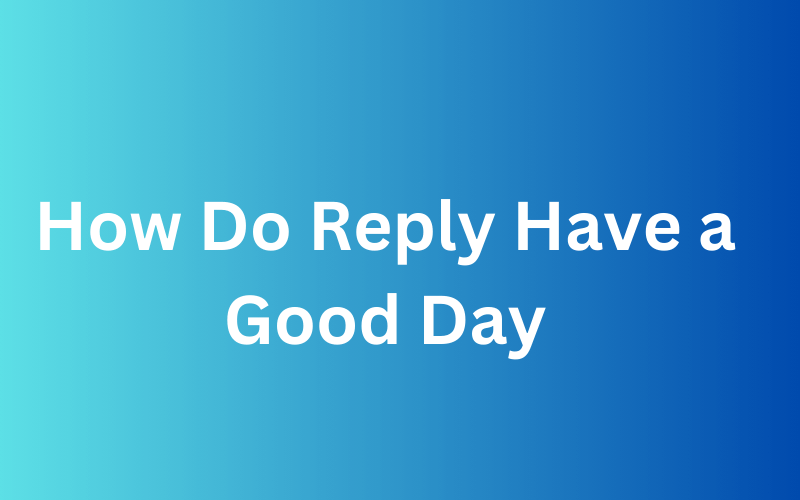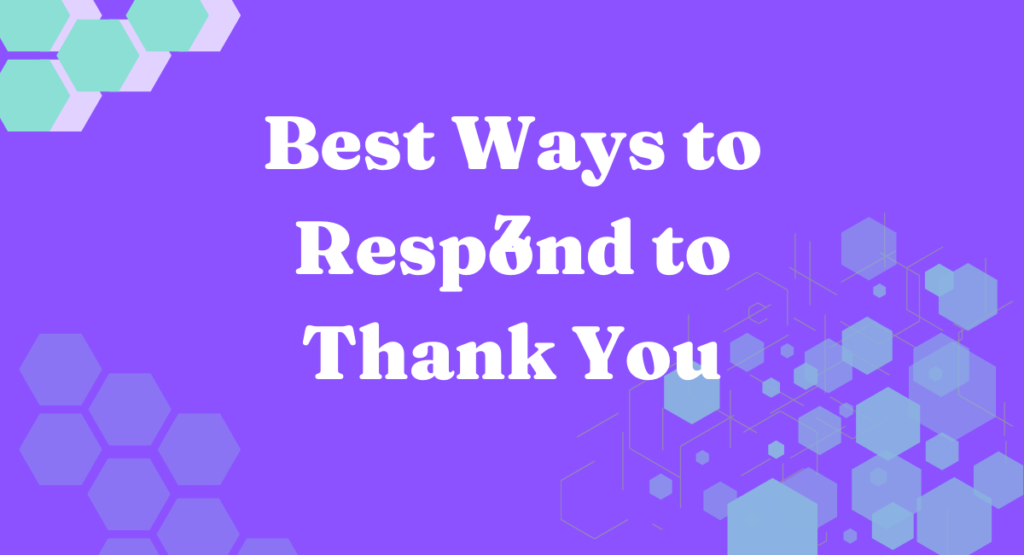To reply to someone saying “Have a good day,” you can simply say “Thank you, you too!”
How To Respond To A Good Day Wish
When someone wishes you a good day, it’s important to respond with kindness and gratitude. Not only does it show that you appreciate their well wishes, but it also helps to maintain positive interactions and build stronger relationships. In this section, we’ll explore the best ways to respond to a good day wish, including formulaic responses, awkward responses to avoid, variety in responses, and the importance of pronunciation, intonation, and rhythm.
Best Ways To Respond
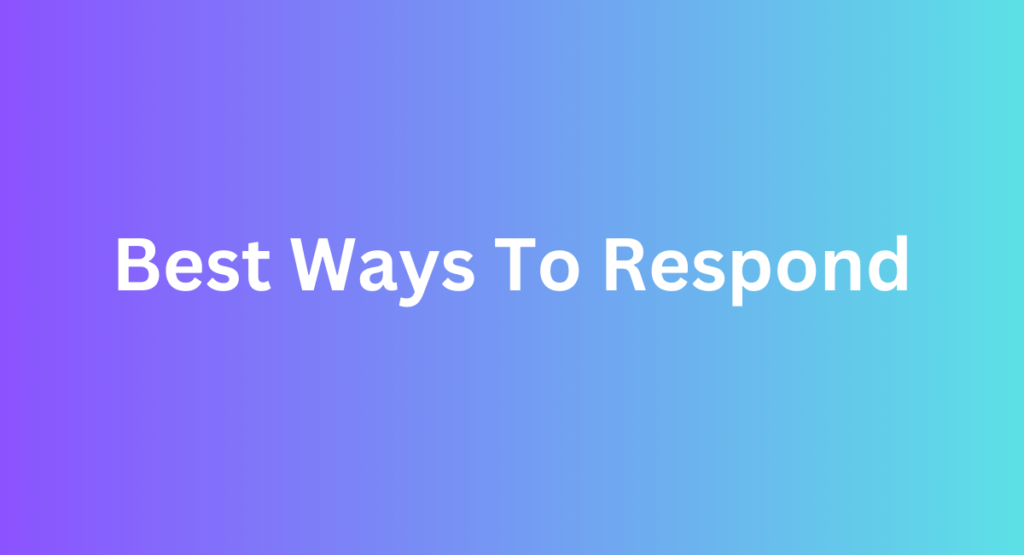
When someone wishes you a good day, the best way to respond is with a kind and sincere reply. Here are a few examples:
- “Thank you! I hope you have a great day too.”
- “I appreciate that. Wishing you an amazing day as well.”
- “Thanks for the good wishes. Same to you!”
- “You too! Wishing you a day filled with positivity and success.”
- “Thanks, you too! May your day be as wonderful as your well-wishes.”
- “Have an amazing day yourself! Take care and enjoy every moment.”
- “Thank you! I hope your day is just as fantastic as you’ve made mine by wishing me well.”
- “I appreciate that! Wishing you a day filled with joy and good vibes.”
- “Likewise! Here’s to a day filled with smiles, laughter, and all-around goodness.”
- “Thanks for the good wishes! I hope your day is filled with positivity and great moments.”
Casual Replay
Responding to the wish “Have a good day” in a casual manner involves using informal language to reciprocate the sentiment. Casual replies are often lighthearted, agreeing with the well-wishing, and may include upbeat phrases. These responses contribute to creating a friendly and relaxed atmosphere in the conversation, allowing for a brief exchange of good wishes with a touch of informality and warmth. Casual replies to “Have a good day” are simple yet convey a friendly and positive vibe, emphasizing shared good intentions.
1. “You too, rock that day!”
2. “Sure thing, catch you on the flip side!”
3. “You have a good one too, my friend!”
4. “Same to you, make it awesome!”
5. “You betcha! Let’s make today a winner.”
6. “Absolutely, sending good vibes your way!”
7. “You got it! Have a day as fantastic as you are.”
8. “Will do, and may it be full of good vibes!”
9. “Thanks, you do the same – enjoy!”
10. “You too, go out and conquer the day!”
Polite Response
Responding politely to the wish “Have a good day” involves expressing gratitude for the well-wishing and courteously reciprocating the sentiment. Polite replies often include phrases conveying appreciation, good wishes, and a positive tone. The goal is to acknowledge the kind words while wishing the same positive sentiments for the person who extended the good wishes. Polite responses contribute to fostering a considerate and friendly communication environment, emphasizing mutual goodwill and positivity in the exchange.
1. “Thank you, you too! Wishing you a wonderful day ahead.”
2. “I appreciate that. Have a great day as well!”
3. “Thanks, and the same to you. Take care!”
4. “I will, and I hope your day is filled with joy and positivity.”
5. “Thanks for the kind words. Have a good day too!”
6. “I will indeed. May your day be filled with happiness!”
7. “Thank you, that’s very thoughtful. Wishing you a fantastic day!”
8. “I appreciate the good wishes. Same to you, have a good one!”
9. “Thanks, and I hope your day is as great as your kindness.”
10. “I will, and I hope your day is filled with smiles and success.”
Friendly Response
Responding in a friendly manner to the wish “Have a good day” involves reciprocating with warmth and enthusiasm. Friendly replies often include expressions of gratitude, positivity, and the extension of good wishes back to the person offering them. The aim is to create a friendly and uplifting atmosphere in the exchange, fostering a sense of camaraderie and shared positive energy. These responses reflect a genuine appreciation for the kind wishes while spreading good vibes and friendliness in return. Friendly replies contribute to building a positive and amicable communication dynamic.
1. “Thanks a bunch! You have an amazing day too, filled with good vibes!”
2. “You’re the best! Have the kind of day that makes you smile non-stop!”
3. “Aw, thank you! Wishing you a day as fantastic as your wishes.”
4. “Cheers! May your day be as bright and cheerful as your message.”
5. “Thanks, friend! Have a day filled with joy, laughter, and all things awesome!”
6. “Appreciate it! Sending you good energy for an outstanding day ahead!”
7. “You’re awesome for saying that! Let’s both have an incredibly good day!”
8. “Thanks a million! Here’s to a day that exceeds all your expectations!”
9. “Right back at you! May your day be as wonderful as your well-wishes.”
10. “Thank you! May your day be filled with positivity and good surprises!”
Formulaic Responses
Formulaic responses are pre-determined phrases or expressions that are commonly used to reply to a good day wish. While they may lack personalization, they can still be valuable in certain situations. Some formulaic responses include:
| Response | Meaning |
|---|---|
| “You too!” | Indicates that you wish the same for the person. |
| “Same to you.” | Returns the well wishes to the person. |
| “Have a great day!” | Expresses your desire for the person to have a great day too. |
Awkward Responses
While it’s essential to respond to a good day wish, there are a few awkward responses that should be avoided. These include:
- Ignoring the well wishes entirely.
- Responding with an unrelated topic.
- Reacting negatively or sarcastically.
Variety In Responses
Adding variety to your responses can keep conversations interesting and show that you genuinely appreciate the good-day wishes. Here are a few examples of varied responses:
- “Thank you! Your kind words have already made my day better.”
- “I hope your day is filled with sunshine and happiness too.”
- “Thanks for the well wishes. Let’s make it a fantastic day together.”
Pronunciation, Intonation, And Rhythm
The tone and delivery of your response also play a crucial role in conveying your gratitude. Ensure you pronounce your words, use the appropriate intonation, and maintain a pleasant rhythm. This will make your response sound confident and genuine.
Responding To Greeting Messages
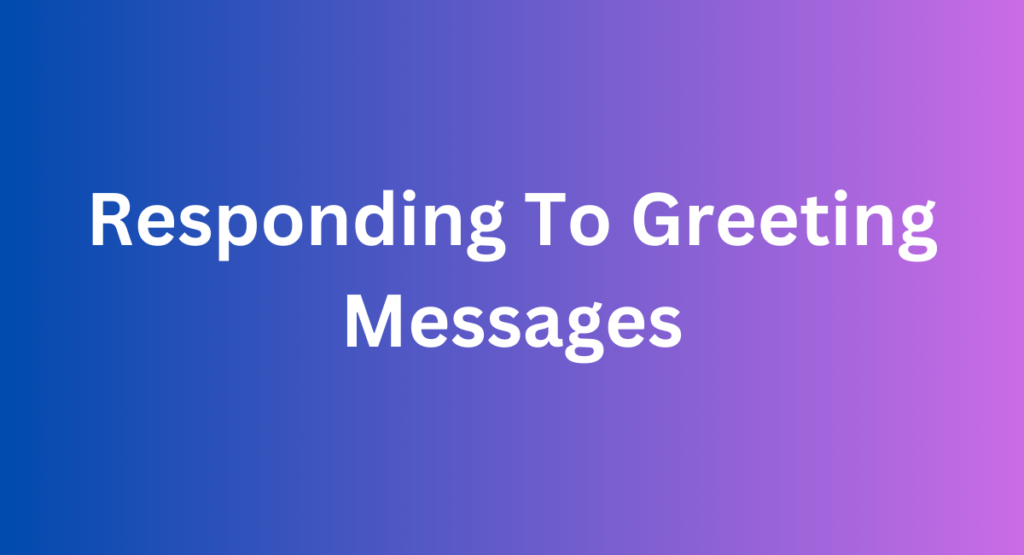
Greeting messages is a common way to start a conversation or show politeness. When someone wishes you a good day, it’s important to respond in a positive and friendly manner. Below are some effective ways to respond to greeting messages, express appreciation, send regards, mention limited time, check on the other person, and express personal well-being.
Expressing Appreciation
When someone wishes you a good day, it’s important to express your appreciation for their kind words. Respond with a simple thank you and show gratitude for their well wishes. For example:
- Thank you so much! I appreciate your kind words.
- Thanks for the well wishes! It means a lot to me.
Sending Regards
Sending regards is a polite way to acknowledge someone’s greeting message. It shows that you value their presence and consider their wishes important. Here are a few examples of how you can send regards:
- Please send my regards to your family! It’s always nice to hear from you.
- Give my regards to everyone! I hope they’re all doing well.
Mentioning Limited Time
Sometimes, you may be pressed for time when you receive a greeting message. It’s important to acknowledge the well wishes while also mentioning your limited availability due to other commitments. Here’s how you can do it:
- Good morning! I wish I had more time to chat, but I have an appointment in fifteen minutes. Let’s catch up another time!
- Thank you for the good wishes! Unfortunately, I’m swamped with work at the moment. I’ll get back to you as soon as I can.
Checking On The Other Person
When someone wishes you a good day, it’s a great opportunity to check on the other person’s well-being. Show genuine interest and ask how they are doing. Here are a few examples:
- Thanks for the kind words! How have you been? I hope everything is going well for you.
- Good to hear from you! How’s life treating you? Let me know if there’s anything new happening.
Expressing Personal Well-being
Lastly, when someone wishes you a good day, you can respond by expressing your well-being. Let them know that you’re doing well and appreciate their greetings. Here’s how you can do it:
- I’m doing well! Thanks for asking. I hope you’re having a great day too.
- Wow! Thanks for the well wishes. I’m doing fantastic! I hope you’re doing just as well.
Remember, responding to greeting messages is a simple way to show courtesy and maintain healthy communication with others. Choose the appropriate response based on the context and your relationship with the person.
Responding To ‘How Was Your Day?’ Text
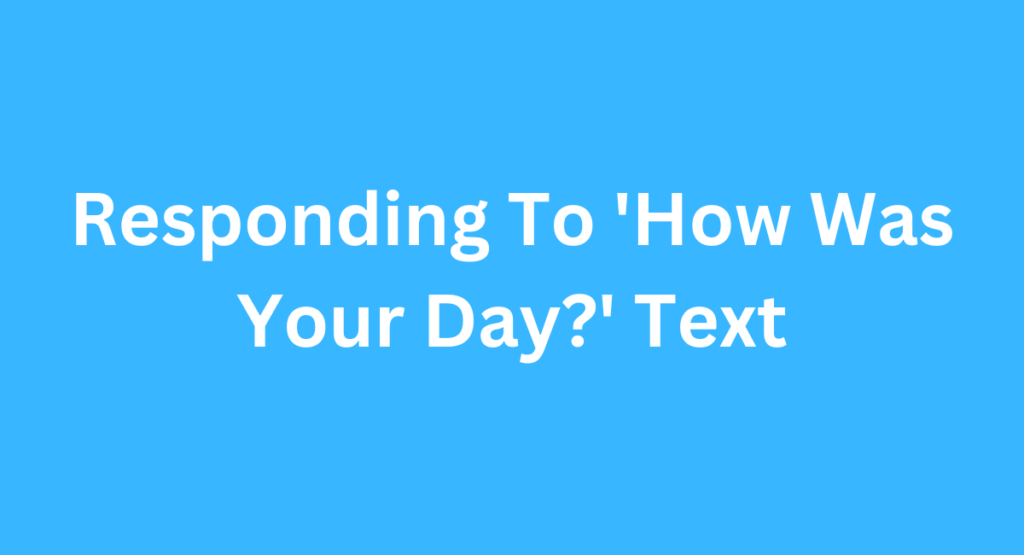
When responding to a “How Was Your Day? ” Text, you can reply with positive phrases like “It was great, thanks for asking!” Or “I had a wonderful day, hope yours was too!” It’s important to keep the response upbeat and genuine.
Simple One-word Response
When someone asks ‘How was your day?’ you can respond with a simple one-word answer. This is a quick and easy way to acknowledge their question without going into too much detail. Some examples of one-word responses could be:
- Good: This is a positive response that indicates your day went well.
- Okay: This response suggests that your day was neither particularly good nor bad.
- Bad: If you had a challenging day, you can simply say ‘bad’ to convey that.
Expressing Positivity
If you want to express positivity in your response to the ‘How was your day?’ text, try using phrases that convey a sense of happiness and optimism. Here are some examples:
- It was great! This response signifies that your day was fantastic and filled with positivity.
- I had an amazing day! This sentence shows that your day was beyond ordinary.
- It was wonderful, thank you for asking! This response not only expresses positivity but also shows appreciation for the person asking.
Giving Brief Details
If you want to provide a bit more information about your day without going into too much detail, you can give a brief response. Here are some examples:
- It was busy but productive. This response indicates that your day was filled with tasks and accomplishments.
- It was fun! I went to the park with friends. This sentence gives a simple summary of a fun outing.
- It was tiring but rewarding. I completed a big project. This response conveys a mix of exhaustion and satisfaction from achieving a goal.
Expressing Appreciation
Lastly, it is always nice to express gratitude and appreciation when responding to the question ‘How was your day?’ Here are a few ways to do so:
- Thanks for asking. It means a lot to me. This response shows appreciation for the person’s interest in your day.
- I appreciate you asking. It was a good day. This sentence acknowledges the person’s question and expresses gratitude.
- Thank you for caring. My day was great. This response conveys appreciation for the person’s concern.
Responding To ‘Have a Great Time’ Wishes
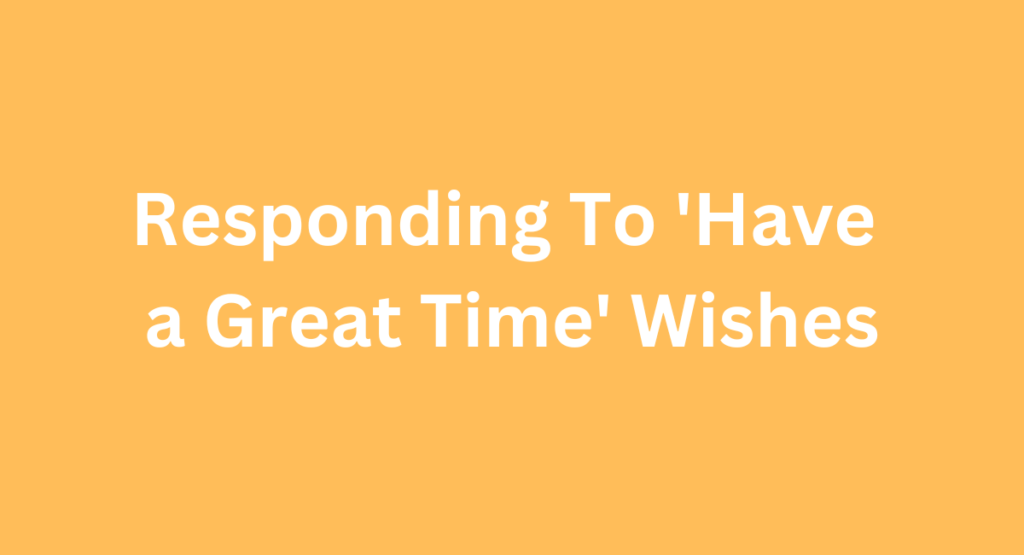
When we receive well-wishes such as ‘Have a Great Time’, it’s only polite to respond accordingly. Whether you’re exchanging pleasantries with a friend, a colleague, or even a stranger, showing appreciation and reciprocating their goodwill goes a long way. In this section, we’ll explore a few simple yet effective ways to respond to such well-wishes.
Simple Thank You
Expressing gratitude is always a good idea. A simple ‘Thank you’ in response to ‘Have a Great Time’ wishes is a courteous acknowledgment of the kind words expressed. It may seem small, but it demonstrates your appreciation for the sentiment expressed by the other person.
Smiling And Saying Goodbye
Sometimes, a genuine smile and a friendly ‘Goodbye’ can suffice when responding to well-wishes. Non-verbal cues can convey warmth and positivity, leaving the other person with a sense of goodwill and camaraderie. A heartfelt gesture can often be just as meaningful as words.
Responding With Personal Wishes
Engaging in a brief exchange of personal wishes can create a connection and leave a lasting impression. Responding with phrases like ‘You too, have a fantastic time!’ or ‘Thank you, and I hope you have a wonderful day as well’ adds a personal touch and fosters a sense of connection.
Frequently Asked Questions On How Do Reply Have A Good Day
How Do You Respond To A Greeting Message?
Some ways to respond to a greeting message are: – “It’s nice to see you again. Give my regards to your family. ” – “Good morning! I wish I had more time to chat, but I have an appointment soon.
” – “It’s great seeing you. I hope you’re doing well. ” – “I’m doing well! Thanks for asking. ” – “Wow! Thanks for the warm greeting!”
How Do You Respond To Was Your Day Good?
Have a good day.
How Do You Respond To Have A Great Time?
Respond to “Have a great time” by saying “Thanks, I will”, or “Thanks”, or by simply smiling and saying goodbye. No lengthy response is needed; just be yourself and relax.
How Do You Say You Have A Great Day Too?
You can respond with “Thanks, you too!” Or “You have a great day too!” These are simple and polite responses to the well-wishes.
Conclusion
Thank you for taking the time to read this blog post on how to reply to “Have a Good Day”. It’s important to respond to this greeting with kindness and positivity. Some simple ways to reply could be by saying “Thank you, you too!” Or “I hope you have a great day too!”.
Remember, a genuine and genuine response goes a long way in brightening someone’s day. So spread positivity and have a good day!

